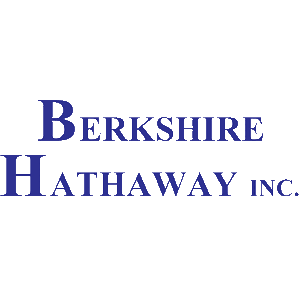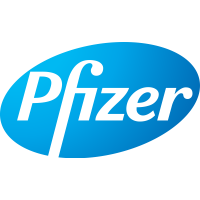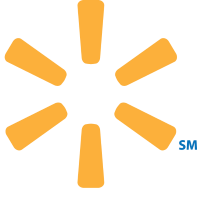
Teck Resources Ltd
NYSE:TECK

Profitability Summary
Teck Resources Ltd's profitability score is 44/100. We take all the information about a company's profitability (such as its margins, capital efficiency, free cash flow generating ability, and more) and consolidate it into one single number - the profitability score. The higher the profitability score, the more profitable the company is.

Score
We take all the information about a company's profitability (such as its margins, capital efficiency, free cash flow generating ability, and more) and consolidate it into one single number - the profitability score. The higher the profitability score, the more profitable the company is.
We take all the information about a company's profitability (such as its margins, capital efficiency, free cash flow generating ability, and more) and consolidate it into one single number - the profitability score. The higher the profitability score, the more profitable the company is.

Score

Score
Margins
Profit margins represent what percentage of sales has turned into profits. Simply put, the percentage figure indicates how many cents of profit the company has generated for each dollar of sale.
Profit margins help investors assess if a company's management is generating enough profit from its sales and whether operating costs and overhead costs are being contained.
Earnings Waterfall
Teck Resources Ltd

|
Revenue
|
10.5B
CAD
|
|
Cost of Revenue
|
-8.3B
CAD
|
|
Gross Profit
|
2.2B
CAD
|
|
Operating Expenses
|
-720m
CAD
|
|
Operating Income
|
1.5B
CAD
|
|
Other Expenses
|
-233m
CAD
|
|
Net Income
|
1.3B
CAD
|
Margins Comparison
Teck Resources Ltd Competitors

| Country | Company | Market Cap |
Gross Margin |
Operating Margin |
Net Margin |
||
|---|---|---|---|---|---|---|---|
| CA |

|
Teck Resources Ltd
NYSE:TECK
|
21B USD |
21%
|
14%
|
12%
|
|
| AU |

|
BHP Group Ltd
ASX:BHP
|
217.2B AUD |
57%
|
38%
|
18%
|
|
| AU |

|
Rio Tinto Ltd
ASX:RIO
|
210.4B AUD |
0%
|
26%
|
19%
|
|
| UK |

|
Rio Tinto PLC
LSE:RIO
|
86.7B GBP |
0%
|
26%
|
19%
|
|
| MX |

|
Grupo Mexico SAB de CV
BMV:GMEXICOB
|
1.2T MXN |
47%
|
44%
|
23%
|
|
| SA |

|
Saudi Arabian Mining Company SJSC
SAU:1211
|
248.9B SAR |
30%
|
19%
|
12%
|
|
| CH |

|
Glencore PLC
LSE:GLEN
|
44.1B GBP |
3%
|
1%
|
-1%
|
|
| CN |
C
|
China Molybdenum Co Ltd
OTC:CMCLF
|
47.5B USD |
18%
|
16%
|
10%
|
|
| CN |

|
CMOC Group Ltd
SSE:603993
|
346.4B CNY |
18%
|
16%
|
10%
|
|
| UK |

|
Anglo American PLC
LSE:AAL
|
33.6B GBP |
20%
|
16%
|
-20%
|
|
| ZA |
A
|
African Rainbow Minerals Ltd
JSE:ARI
|
34.6B Zac |
-2%
|
-5%
|
3%
|
Return on Capital
Return on capital ratios give a sense of how well a company is using its capital (equity, assets, capital employed, etc.) to generate profits (operating income, net income, etc.). In simple words, these ratios show how much income is generated for each dollar of capital invested.




Return on Capital Comparison
Teck Resources Ltd Competitors

| Country | Company | Market Cap | ROE | ROA | ROCE | ROIC | ||
|---|---|---|---|---|---|---|---|---|
| CA |

|
Teck Resources Ltd
NYSE:TECK
|
21B USD |
5%
|
3%
|
4%
|
3%
|
|
| AU |

|
BHP Group Ltd
ASX:BHP
|
217.2B AUD |
20%
|
9%
|
22%
|
14%
|
|
| AU |

|
Rio Tinto Ltd
ASX:RIO
|
210.4B AUD |
19%
|
10%
|
15%
|
12%
|
|
| UK |

|
Rio Tinto PLC
LSE:RIO
|
86.7B GBP |
18%
|
9%
|
14%
|
10%
|
|
| MX |

|
Grupo Mexico SAB de CV
BMV:GMEXICOB
|
1.2T MXN |
18%
|
10%
|
21%
|
16%
|
|
| SA |

|
Saudi Arabian Mining Company SJSC
SAU:1211
|
248.9B SAR |
9%
|
4%
|
7%
|
7%
|
|
| CH |

|
Glencore PLC
LSE:GLEN
|
44.1B GBP |
-5%
|
-2%
|
4%
|
5%
|
|
| CN |
C
|
China Molybdenum Co Ltd
OTC:CMCLF
|
47.5B USD |
28%
|
11%
|
28%
|
17%
|
|
| CN |

|
CMOC Group Ltd
SSE:603993
|
346.4B CNY |
28%
|
11%
|
28%
|
17%
|
|
| UK |

|
Anglo American PLC
LSE:AAL
|
33.6B GBP |
-20%
|
-7%
|
6%
|
23%
|
|
| ZA |
A
|
African Rainbow Minerals Ltd
JSE:ARI
|
34.6B Zac |
1%
|
0%
|
-1%
|
0%
|
Free Cash Flow
Free cash flow (FCF) is the money a company has left over after paying its operating expenses and capital expenditures. The more free cash flow a company has, the more it can allocate to dividends, paying down debt, and growth opportunities.
If a company has a decreasing free cash flow, that is not necessarily bad if the company is investing in its growth.



















































